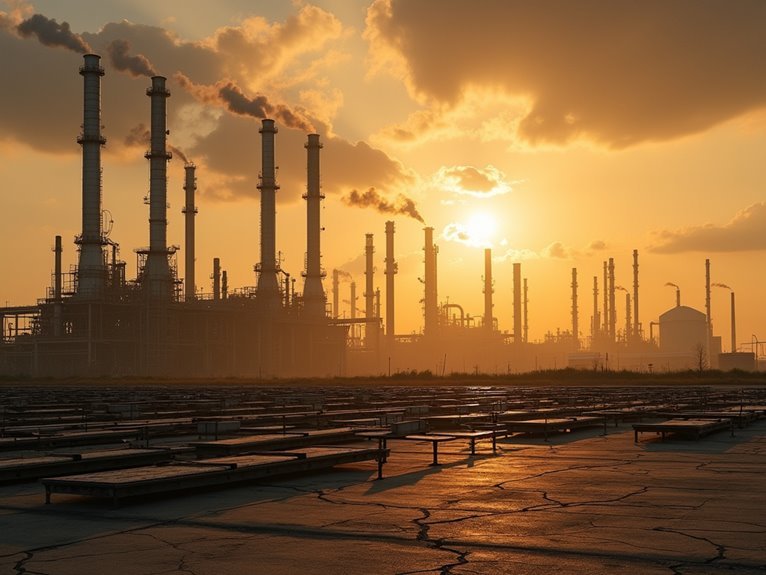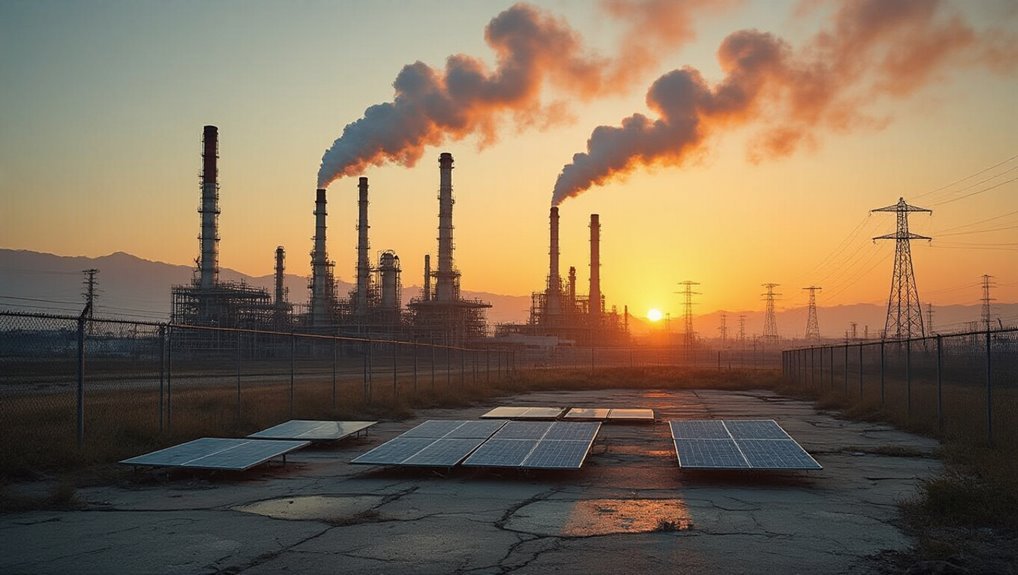The Trump administration wiped out $3.7 billion in clean energy projects in early 2025. The cuts hit battery plants, solar farms, and a major Exxon Baytown facility. Kore Power’s $1.25 billion plant and Freyr Battery’s $2.6 billion factory got axed. Executive orders froze funding across wind, solar, and battery sectors. Industry leaders called it economic sabotage. Environmental groups filed lawsuits. The moves left investors spooked and put thousands of manufacturing jobs at risk. The full impact stretches far beyond these initial cancellations.

When the Trump administration took office in early 2025, one of its first moves was to slam the brakes on clean energy development across the country. The impact was immediate and massive. Nearly $8 billion in clean energy projects got axed in the first quarter alone, sending shockwaves through an industry that had been riding high on federal support. Among the casualties were major facilities like Kore Power’s $1.25 billion Arizona plant and Freyr Battery’s $2.6 billion Georgia factory.
The administration wielded executive orders like a wrecking ball. Wind farms, solar installations, offshore energy projects—nothing was safe. Companies that had bet big on America’s green transformation suddenly found themselves staring at frozen funding and canceled contracts. The uncertainty didn’t just hurt balance sheets. It made investors nervous. Real nervous. Who wants to pour millions into projects that might get killed by the next executive order?
This wasn’t just about domestic policy either. The administration pulled the plug on international clean energy partnerships, withdrawing funding for renewable projects in countries that desperately needed alternatives to fossil fuels. South Africa, among others, watched American support evaporate overnight, losing $56 million in grants along with $1 billion in potential loans from the US International Development Finance Corporation. Diplomatic relationships that took years to build started showing cracks. The message was clear: America was pivoting back to fossil fuels, and the rest of the world could figure out their own climate solutions.
The Inflation Reduction Act, once hailed as a game-changer for clean energy, became a prime target. Funding freezes hit programs that were supposed to accelerate the shift away from oil and gas. The administration framed it as cutting wasteful spending. Industry leaders called it economic sabotage. The shift also created major hurdles for foreign renewable energy professionals seeking to work in the U.S., as NIW petitions in the renewable energy sector faced increased scrutiny and longer processing times.
Climate groups weren’t taking it lying down. Lawsuits started flying almost as fast as the executive orders. Environmental organizations, backed by teams of lawyers, challenged the administration’s authority to unilaterally cancel approved projects and freeze allocated funds. The Just Security tracker documented hundreds of these legal challenges as they wound their way through the courts. The courtroom battles promised to be long and messy, creating even more uncertainty for an industry already reeling from policy whiplash.
The human cost was real too. Clean energy jobs—from manufacturing to installation—faced the chopping block. Communities that had welcomed wind and solar projects as economic lifelines watched those opportunities vanish. Meanwhile, global competitors rubbed their hands together. China and Europe were more than happy to fill the void America was creating in renewable technology leadership.
Market analysts warned about the long-term consequences. The U.S. risked falling behind in what many consider the defining industry of the 21st century. While other nations doubled down on clean energy investments, America seemed determined to swim against the tide.
The administration’s priorities couldn’t be clearer. Fossil fuels were back in favor, and clean energy was out. Whether this dramatic shift would pay off economically remained to be seen. What was certain was that the ripple effects—financial, environmental, and diplomatic—would be felt for years to come. The clean energy sector had weathered storms before. This one might be its biggest test yet.



